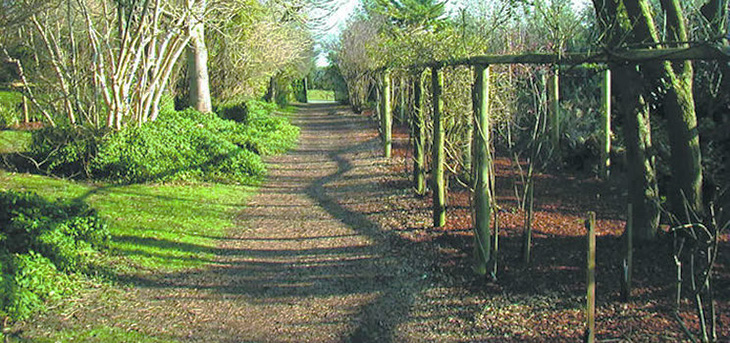 Hello my name’s Lisa and I’m a Craft Gardener at Highdown Gardens.
Hello my name’s Lisa and I’m a Craft Gardener at Highdown Gardens.
Autumn is here and I’m aware the climbing roses along the Pergola, at the very bottom of Highdown Gardens, will soon need to be pruned and tied back. This task is done between late autumn up until the end of winter, when the roses have finished their show of flowers and rose hips.
At the moment the climbing roses’ new growth is long, hanging loose and dangling along the Pergola. Every winter, I have the long but enjoyable job of saving the climbing roses’ fresh new growth and tying it onto the wires along the Pergola, in my preferred circular, wavy style. However, old growth is saved and tied in if new growth is limited, to ensure the climbing roses look balanced and evenly spaced when tied up along the wires. If there’s plenty of new growth it’s a case of selecting the best and strongest stems and sacrificing the others, so the rose is not too crowded and there is space between the stems when tied up onto the Pergola.
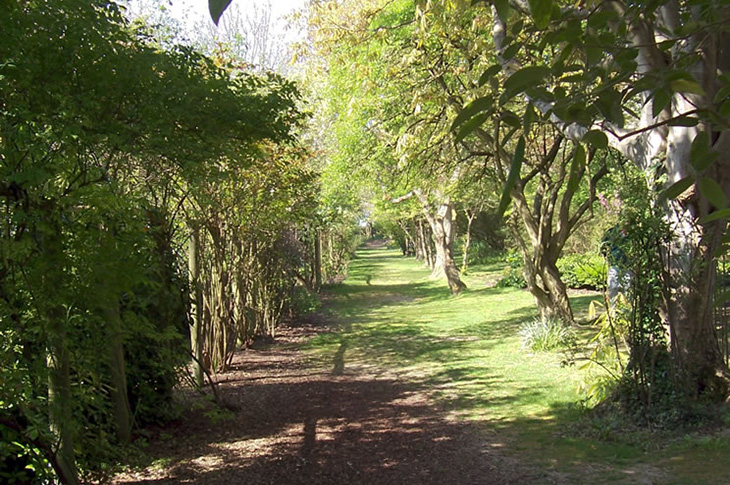
We have one rambling rose on the Pergola, Rambling Rector, which is treated differently to the climbing roses. It is pruned immediately after flowering, this is because rambling roses will not repeat flower and have finished what they were going to do that year, and will flower again next summer on the previous year’s wood. Unlike climbing roses which will flower repeatedly and flower next summer on the current year’s growth.
Originally during Sir Frederick Stern’s time there used to be two long Pergolas at the bottom of the garden covered with climbing roses, providing a magnificent tunnel of roses to walk through. However, over time trees had grown up and around the Pergolas, shading out the roses, and the two Pergolas eventually rotted away. Only one of the Pergolas was remade and put back, you still see a small section of the old wooden structure of the other Pergola.
While this area of Highdown Gardens is still a bit of a jungle, there are some beautiful shrubs growing here, like Solanum Laciniatum or Kangaroo Apple with its beautiful purple flowers which flower for a long period throughout spring and summer. This shrub attracts a lot of attention from visitors.
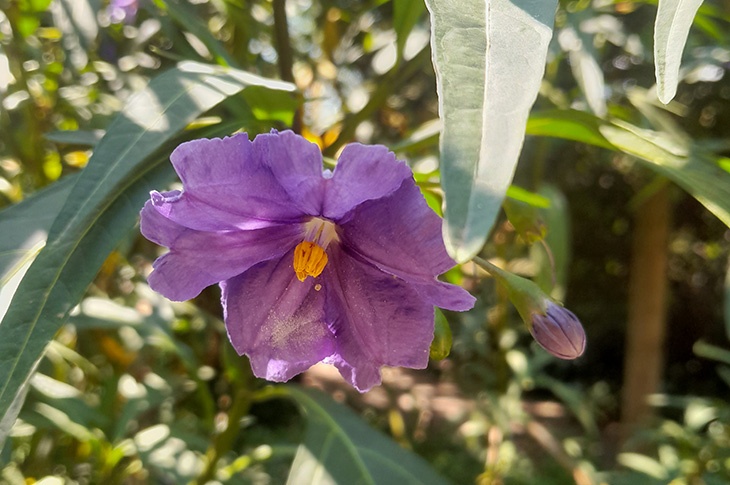
Also the Schisandra Grandiflora Rubriflora or Chinese Magnolia Vine with deep red flowers flowering in spring and summer is stunning.
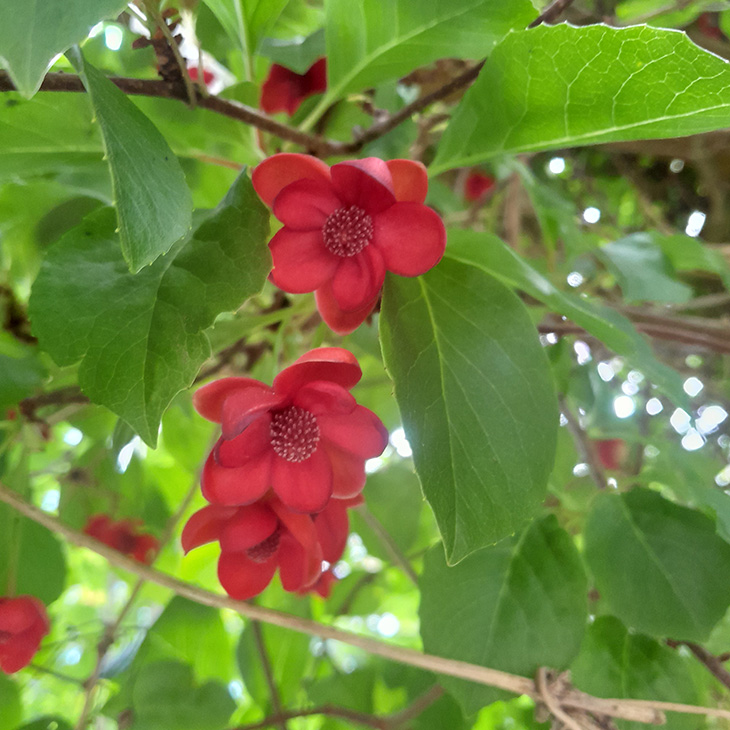
Close to the Schisandra is the Clematis Armandii which is covered in cream-white flowers in spring, stopping visitors in their tracks.
Over the two years I’ve been here, I’ve found a few hidden shrubs growing in this area. Abelia Chinensis or Chinese Abelia with it white beautiful scented flowers, has only just stopped flowering now. It flowers mid to late summer but as the weather has been mild it was flowering until just recently.
In late spring I stumbled upon a group of beautiful Allium Siculum or Sicilian Honey Garlic emerging from a mass of Periwinkle undergrowth.
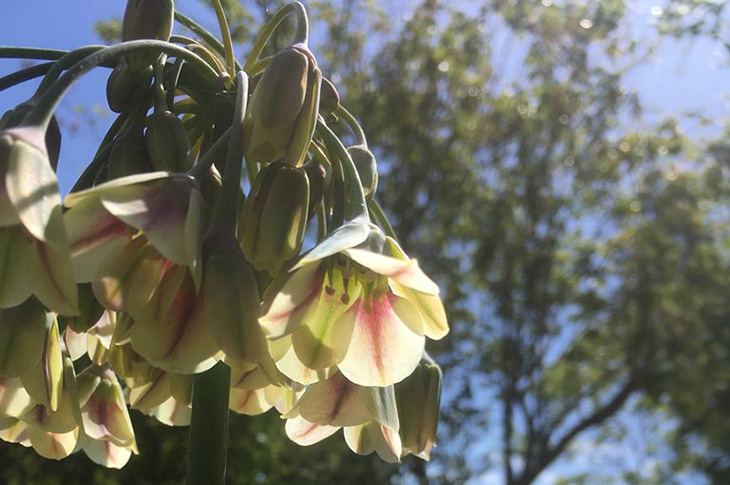
Behind the Pergola and the roses, close to the Abelia Chinensis there is an elegant and unusual Buddleia growing. These discoveries give a hint of what this part of the garden must have looked like during Stern’s time. l look forward to the enjoyable task of identifying and pruning the shrubs in this area and controlling the Periwinkle, weeds and tree saplings growing here.
